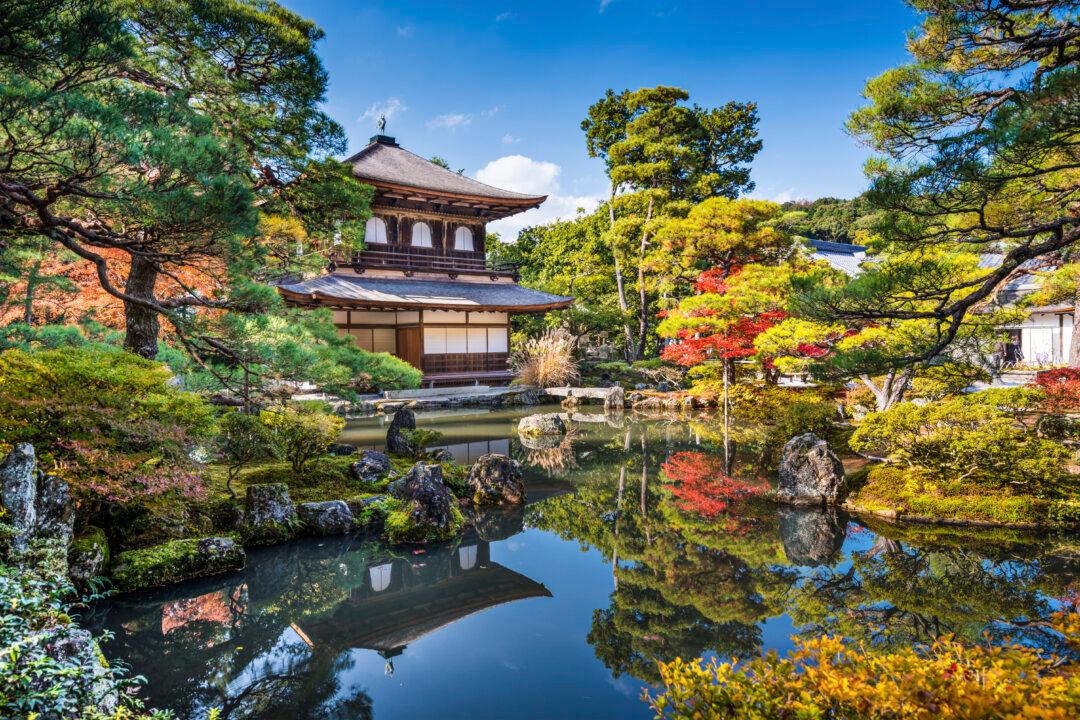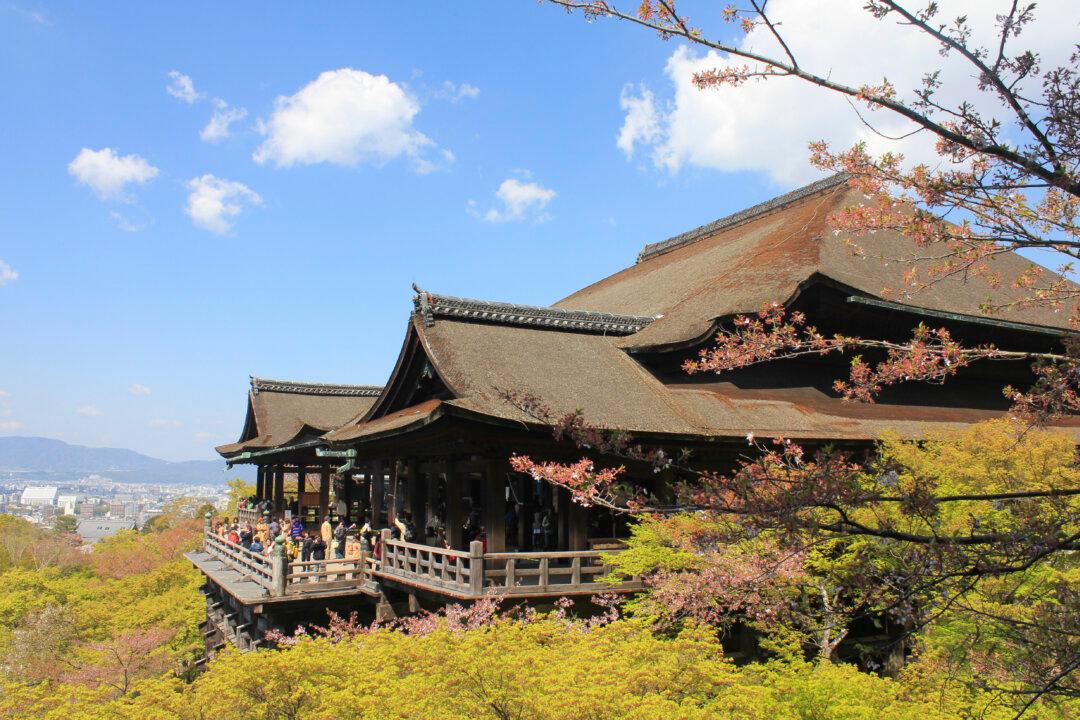One of the most iconic symbols of Kyoto is Kinkaku-ji, or The Golden Pavilion. For years it has consistently been one of the top tourist destinations in Japan. If you are coming to Kyoto, make sure to add this ancient temple to your must-see list.
For almost 600 years, the three story temple quietly watches over the crowd and reflects the sun from every angle. It is hard not to feel a sense of awe looking at the intricate details of the ancient structure covered in gold. Standing in front of the temple is one of the most iconic Japan experiences you can have. The temple extends into the pond, aptly named Kyouko-chi, or Mirror Pond. The calm waters reflect the golden light of the temple and give the grounds a peaceful presence, no matter how many people are gathered.
Architecturally, The Golden Pavilion is incredibly unique, featuring a different architectural style for each of its three floors. The first floor is built in the Heian Period palace style featuring natural wood and bright white walls. Make sure to take a peek into the first floor. From across the pond at the right angle, you can see Buddhist statues peeking through the open windows. The second floor is built in the style of samurai residences, its latticed windows and sliding doors are completely covered in gold leaf. The third floor is built in traditional Chinese Zen style and is covered in gold leaf both inside and out. The roof is topped with a solitary golden phoenix.
Although The Golden Pavilion is a spectacular sight all year round, it is particularly beautiful in autumn when the leaves change. The color of the vermillion maples is a perfect backdrop, reflected by the temple’s golden sheen. The gardens are filled with trees that transform into every hue. If you are travelling in winter, do like the locals do and watch the weather closely. At the first sign of snowfall, visitors flock to the Golden Pavilion to get a glimpse of it dusted in fresh snow, a rare site that showcases the simple beauty of Kyoto.
Once you exit the paid temple complex, there are souvenir shops as well as a small tea garden where you can purchase Matcha green tea and traditional Japanese desserts. After a long day of walking around Kyoto, it is recommended to not only delve into the delicious world of Japanese sweets, but to sit and take some time to reflect on the day.



